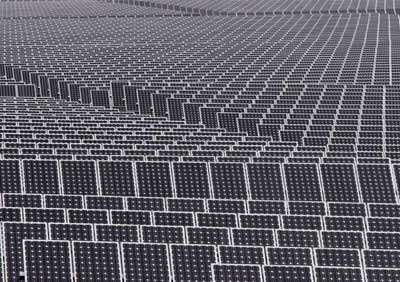US hits 10GW solar milestone
 The United States just reached a new milestone for installed solar photovoltaic capacity.
The United States just reached a new milestone for installed solar photovoltaic capacity.
There are now 10 gigawatts of solar electric generating capacity in the country, according to an announcement today from NPD Solarbuzz. Crossing that threshold puts the US in league with Germany, Italy and China – the only other countries in the world to have 10 gigawatts or more of installed solar.
“The US has now joined an elite group of maturing solar PV markets,” NPD Solarbuzz analyst Christopher Sunsong said in a statement.
Surpassing the 10-gigawatt mark is significant, according to a release from the market analysis firm. While the sheer volume of solar energy generation operating in the country is impressive, NPD suggests the rapid industry growth is the most interesting piece of the recent announcement.
More than 83 percent of the 10 gigawatts of solar in the US was installed within the last 14 quarters – just three and a half years.
“Solar PV has been one of the fastest growing energy sources in the US over the past six years,” according to the release. The compound annual growth rate of the solar industry has been greater than 50 percent since 2007 with the number of solar PV installations predicted to continue growing, adding an additional 80 percent over the next 18 months. NPD analysts predict that the country will surpass 17 installed gigawatts of solar by the end of 2014.
The rapid market expansion is due in part to falling solar panel costs, which plummeted from an average of $6 per watt two years ago to $4.25 for residential systems now and $3 per watt for utility-scale solar projects. There is also continued support from the federal government.
“The US solar PV market growth has been stimulated by an increased range of solar incentive programs at the state level,” Sunsong said.
As states have adopted renewable energy portfolio standards, requiring utility companies to get a certain percentage of their electricity from renewable sources, local incentives have remained strong.
Thos incentives have been more prevalent in Western states like California and along the East Coast, according to NPD. The Southwest and certain southern states have increasingly encouraged solar development.
“Other regions, however, such as the Great Plains and Great Lakes, remain largely undeveloped, creating further market upside going forward,” Sunsong said.



